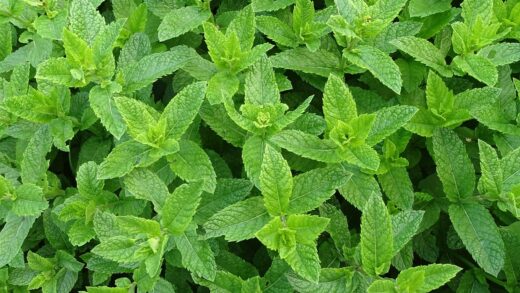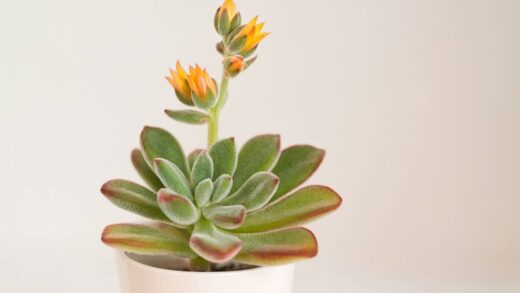The topic of pruning and cutting back the dwarf iris is one that requires a nuanced understanding of the plant’s life cycle, as improper trimming can inadvertently sabotage the next year’s floral display. Unlike many other perennials that benefit from regular shearing, the primary “pruning” for irises is a carefully timed and specific process focused on sanitation and energy conservation. The main tasks involve the removal of spent flowers and the eventual cutting back of the foliage, but the timing and execution of these actions are critical to the long-term health and vitality of the plant. A thoughtful approach ensures the plant can complete its natural energy cycle while keeping the garden tidy.
The most immediate pruning task for a dwarf iris is the removal of the flowers once they have faded. This practice, commonly known as deadheading, serves an important aesthetic and biological purpose. Aesthetically, it instantly tidies up the appearance of the plant, removing the withered, brown petals and keeping the focus on the remaining fresh blooms and attractive foliage. Biologically, deadheading prevents the plant from expending a significant amount of its energy on developing seed pods. By removing the spent flower, you redirect that energy back towards the rhizome, where it can be stored and used to develop more and stronger blooms for the following season.
When deadheading, it is important to do so correctly to avoid damaging the plant. You should not just pull off the dead petals. Instead, use a pair of clean, sharp scissors or small pruning shears to snip off the entire flower stalk at the point where it emerges from the base of the leaf fan. This clean cut is preferable to snapping the stem, which can create a ragged wound that may be more susceptible to disease. For dwarf irises, which often have short stems, this is a simple and quick task that pays dividends in both the plant’s appearance and its future performance.
It is absolutely crucial to understand what not to prune after flowering. Under no circumstances should you cut back the green, healthy foliage after the blooms have faded. These leaves are the plant’s engine for the rest of the growing season. They will continue to absorb sunlight and photosynthesize, producing the essential food reserves that are then transferred down to be stored in the rhizome. Cutting this foliage back prematurely is akin to starving the plant; it severely diminishes the energy reserves and will result in a much weaker plant with few, if any, flowers the next year.
The temptation to trim back the foliage to make the garden look “neater” must be resisted. The leaves need to remain on the plant throughout the summer months to perform their vital function. As the season progresses, the foliage may start to look a bit tired, and it may develop some minor blemishes like fungal spots, but as long as it is predominantly green, it is working for the plant. Patience is key; you must allow the leaves to complete their life cycle naturally.
More articles on this topic
The importance of post-bloom foliage
After the vibrant and often brief flowering period of the dwarf iris concludes, the green, sword-like foliage takes center stage, and its role is anything but passive. This foliage becomes the primary focus of the plant’s energy production for the remainder of the growing season. Each leaf acts as a small solar panel, capturing sunlight and converting it into the sugars and starches that are essential for the plant’s survival and future propagation. This process of photosynthesis is what powers the entire system.
The energy produced by the leaves is systematically transported down to the rhizome, the fleshy, underground stem of the iris. The rhizome serves as a storage organ, much like a battery, accumulating these energy reserves throughout the summer. This stored energy is critical for several functions. It sustains the plant through its summer dormancy and the cold winter months, and it provides the initial burst of power needed for the rapid emergence of new leaves and flowers the following spring. Without healthy foliage after blooming, this entire energy storage cycle is broken.
Furthermore, it is during this post-bloom period that the rhizome is not only storing energy but is also developing the embryonic flower buds for the next season. The health and vigor of the foliage directly impact the number and size of these buds. A plant with a full, healthy fan of leaves is able to store more energy and, consequently, can form more and larger flower buds. If the foliage is removed too early or is significantly damaged by disease, the rhizome will not have the resources needed to initiate a strong bloom cycle for the next year.
Therefore, the post-bloom foliage should be considered an essential and active part of the plant, not just a leftover from the main event. It requires continued access to sunlight and should be protected from damage. This is why it is so important to plant dwarf irises in a location where they will not be overshadowed by taller plants that leaf out later in the season. The health of the summer foliage is the best predictor of the quality of the subsequent spring’s floral display.
More articles on this topic
When to cut back the foliage
The correct time to cut back the foliage of a dwarf iris is a question that is answered by the plant itself, not by a calendar date. You must wait until the foliage has completed its work for the season and has begun to die back naturally. This process typically occurs in the autumn, often accelerated by the first light frosts of the season. As the plant prepares for winter dormancy, it will draw all the remaining energy and nutrients out of the leaves and down into the rhizome, causing the leaves to turn yellow and then brown.
It is only when the leaves have turned predominantly yellow or brown that it is safe to cut them back. At this point, they are no longer photosynthesizing or contributing to the plant’s energy reserves. Waiting for this natural senescence to occur ensures that you have allowed the rhizome to become fully “charged” for the winter. Cutting back the leaves while they are still green, even if they look a bit tattered, will short-circuit this vital process and weaken the plant.
The visual cue is unmistakable: healthy green leaves should be left alone, while yellowing or brown, dying leaves can be removed. This process can be gradual, and you can trim individual leaves as they die back, or you can wait until the entire fan of leaves on a plant has withered. For most gardeners, a single, major cleanup in the late autumn after the first hard frost has decisively ended the growing season is the most practical approach.
This patient approach not only benefits the plant’s health but also contributes to a more sustainable garden ecosystem. The dying foliage provides a bit of natural mulch and habitat for small organisms as it decomposes. However, in the case of irises, the benefits of sanitation often outweigh this, so the final cutback and removal of the debris is still the recommended practice to prevent pests and diseases from overwintering.
How to perform the autumn cleanup
Once the foliage has naturally died back in the autumn, performing a final cleanup is a straightforward but important task for garden sanitation. The primary tool for this job is a pair of clean and sharp pruning shears or scissors. Using a sharp tool ensures that you make clean cuts rather than tearing the plant tissue, which can create entry points for disease, even on dormant plants. It is a good practice to sterilize your pruning tools with rubbing alcohol or a bleach solution between plants, especially if you have had any disease issues in your garden.
When cutting back the dead foliage, you should trim the leaves down to a height of approximately two to three inches above the ground. This leaves a small, neat tuft that helps to mark the location of the plant, preventing you from accidentally digging it up or stepping on it during off-season activities. It also allows for good air circulation at the base of the plant come spring. Do not cut the foliage all the way down to the level of the rhizome, as this can damage the crown where new growth will emerge.
After you have cut back all the foliage, it is crucial that you gather and remove all the clippings and any other dead leaves or debris from around the base of the plants. This step is the most important part of the cleanup from a pest and disease control perspective. The old foliage is a primary overwintering site for the eggs of the destructive iris borer moth, as well as the spores of fungal diseases like leaf spot. By removing this material from the garden, you are breaking their life cycle and significantly reducing the likelihood of an infestation or infection the following spring.
Do not add the old iris foliage to your compost pile, especially if you have noticed any signs of pests or diseases on the leaves during the growing season. The temperatures in many home compost piles are not high enough to reliably kill pathogens or pest eggs. The safest course of action is to dispose of the debris in your municipal yard waste or to burn it, if local regulations permit. This final act of sanitation is your best defense against future problems.
Pruning for division and transplanting
The only other time that it is appropriate and necessary to cut back the foliage of a dwarf iris is when you are dividing the clumps or transplanting them. This is typically done during the plant’s dormant season in the late summer or early autumn. When you dig up a rhizome to move or divide it, you inevitably damage some of its root system. The existing leaves, however, will continue to lose water through transpiration, and the reduced root system may not be able to absorb enough water to keep up with this loss.
To compensate for this and to reduce the stress on the newly transplanted rhizome, it is standard practice to trim the fan of leaves. Using clean shears, cut the leaves back by about two-thirds, leaving a short fan that is approximately three to four inches tall. This drastic reduction in the leaf surface area significantly lowers the amount of water the plant loses, allowing it to focus its energy on the critical task of establishing a new root system in its new location.
This “pruning” also has a practical, physical benefit. A full-sized fan of leaves can act like a sail in the wind, and a newly planted rhizome without a strong anchor of roots can be easily rocked or even dislodged from the soil. The shortened, trimmed fan of leaves presents much less wind resistance, helping the rhizome to remain stable and in firm contact with the soil while it grows new roots to secure itself.
It is important to remember that this type of foliage trimming is only done in the specific context of division and transplanting. It is a technique used to aid in the re-establishment of the plant. For established, undisturbed plants, the foliage should always be allowed to die back naturally at the end of the season. Following these distinct rules for pruning and cutting back will ensure your dwarf irises remain healthy, vigorous, and productive for many years.
📷 Jerzy Opioła, CC BY-SA 4.0, via Wikimedia Commons


















